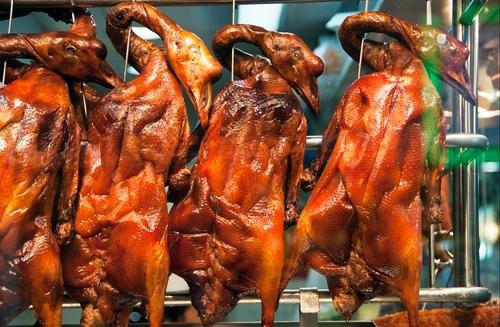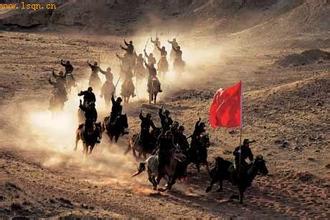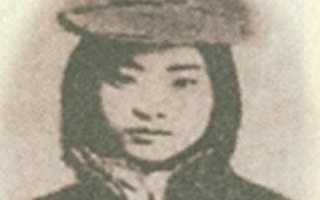
You know that thing? That thing that’s everywhere, and it sounds like something you should already know about, so you don’t really want to ask? Well, we know about it, and we’ll give you the intel.
How popular a delicacy is Peking duck? Popular enough to warrant an10,000 square-foot museum dedicated to it in China.
It’s located in the downtown Beijing branch of the restaurant chainQuanjude, which has been serving roast duck since 1864. (Not too shabby!) Among the 500 items on display are a coupon from a 1901 duck sale and photographs of Mao Zedong chowing down.
Peking duck ranks high among the Chinese dishes that have made the trek Westward, but there’s a lot to it that you may not know. We asked Ed Schoenfeld, the co-owner of Decoy, a Peking duck-themed restaurant that opened this past spring in New York City, to help us fill in the gaps.
How It’s Made: Peking duck takes several days to prepare. First, fatty birds bred specifically for the dish are pumped with air to separate the skin from its meat. This insures that the “skin [is] very crispy and the meat succulent,” said Schoenfeld. They’re then scalded with boiling water, painted with a sweet mixture of maltose and water, and hung inside a 500-degree oven for up to 75 minutes. Only then are the ducks artfully sliced and trimmed of excess fat.
What the Name Means: The dish takes its name from a now out-of-favor transliteration of “Beijing.” In English, the dish is often called “Beijing duck” or simply “roast duck.”
Where It Comes From: The first Peking duck was roasted some time during the early 15th century, when it was a popular dish on imperial court menus of the Ming Dynasty. During this era, “the really great chefs didn’t really work in restaurants,” Schoenfeld said. “They worked for patrons, much in the same way as a painter or a composer had a patron in court in Renaissance Europe.” These chefs helped define imperial cuisine, which in turn influenced the cuisine of the entire country.
How It’s Eaten: A Peking duck is often sliced tableside and served alongside cucumbers and scallions. The components are wrapped in a thin flour pancake, which is slathered with any of several savory sauces.
In the United States, the sauce is usually a thick-and-sweet Hoisin sauce, which is made with soy sauce, black bean paste, honey, and rice vinegar. But in China, Schoenfeld said, the sauce of choice is a ”sweet brown soybean-based sauce,” or in Beijing specifically, a salty “yellow soybean sauce that is its first cousin.”
Where It’s Eaten: In both the US and China, there are several restaurants devoted exclusively to the dish—Decoy and Quanjude being prime examples, respectively. But many restaurants also serve Peking duck in another way.
"In China, there’s banquet cooking," Schoenfeld said, which can be very elaborate (and expensive affairs). "Very often you eat Peking duck as one course of a ten-course banquet … [though] if you’re at a very elegant banquet, you’d only eat the skin of the duck."
While Schoenfeld said eating just the skin seems a terrible waste, he thinks a museum devoted to the dish is an excellent idea.
"I think we need to make a strategic alliance right away," he said of Quanjude. "I’d love to be one of the [museum’s] first visitors.”




